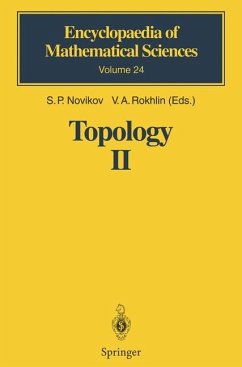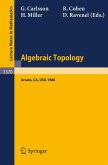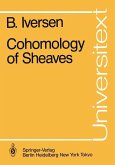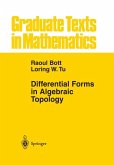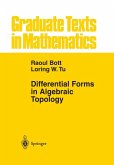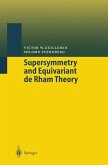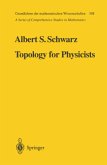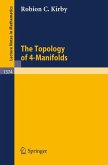to Homotopy Theory O. Ya. Viro, D. B. Fuchs Translated from the Russian by C. J. Shaddock Contents Chapter 1. Basic Concepts . . . . . . . . . . . . . . . . . . . . . . . . . . . . . . . . . . . . . . . . 4 § 1. Terminology and Notations . . . . . . . . . . . . . . . . . . . . . . . . . . . . . . . . . . . 4 1. 1. Set Theory . . . . . . . . . . . . . . . . . . . . . . . . . . . . . . . . . . . . . . . . . . . . 4 1. 2. Logical Equivalence . . . . . . . . . . . . . . . . . . . . . . . . . . . . . . . . . . . . 4 1. 3. Topological Spaces . . . . . . . . . . . . . . . . . . . . . . . . . . . . . . . . . . . . . 5 1. 4. Operations on Topological Spaces . . . . . . . . . . . . . . . . . . . . . . . . . 5 1. 5. Operations on Pointed Spaces . . . . . . . . . . . . . . . . . . . . . . . . . . . . . 8 §2. Homotopy . . . . . . . . . . . . . . . . . . . . . . . . . . . . . . . . . . . . . . . . . . . . . . . . . 10 2. 1. Homotopies . . . . . . . . . . . . . . . . . . . . . . . . . . . . . .. . .. . . . . . . . . . 10 2. 2. Paths . . . . . . . . . . . . . . . . . . . . . . . . . . . . . . . . . . . . . . . . . . . . . . . . . 10 2. 3. Homotopy as a Path . . . . . . . . . . . . . . . . . . . . . . . . . . . . . . . . . . . . 11 2. 4. Homotopy Equivalence . . . . . . . . . . . . . . . . . . . . . . . . . . . . . . . . . . 11 2. 5. Retractions . . . . . . . . . . . . . . . . . . . . . . . . . . . . . . . . . . . . . . . . . . . . 11 2. 6. Deformation Retractions . . . . . . . . . . . . . . . . . . . . . . . . . . . . . . . . . 12 2. 7. Relative Homotopies . . . . . . . . . . . . . . . . . . . . . . . . . . . . . . . . . . . . 13 2. 8. k-connectedness . . . . . . . . . . . . . . . . . . . . . . . . . . . . . . . . . . . . . . . . 13 2. 9. Borsuk Pairs . . . . . . . . . . . . . . . . . . . . . . . . . . . . . . . . . . . . . . . . . . . 14 2. 10. CNRS Spaces . . . . . . . . . . . . . . . . . . . . . . . . . . . . . . . . . . . . . . . . . . 15 2. 11. Homotopy Properties of Topological Constructions . . . . . . . . . . . 15 2. 12. Natural Group Structures on Sets of Homotopy Classes . . . . . . . . 16 §3. Homotopy Groups . . . . . . . . . . . . . . . . . . . . . . . . . . . . . . . . . . . . . . . . . . . 20 3. 1. Absolute Homotopy Groups . . . . . . . . . . . . . . . . . . . . . . . . . . . . . . 20 2 O. Ya. Viro, D. B. Fuchs 3. 2. Digression: Local Systems . . . . . . . . . . . . . . . . . . . . . . . . . . . . . . . 22 3. 3. Local Systems of Homotopy Groups of a Topological Space . . . . 23 3. 4. Relative Homotopy Groups . . . . . . . . . . . . . . . . . . . . . . . . . . . . . . . 25 3. 5. The Homotopy Sequence of a Pair . . . . . . . . . . . . . . . . . . . . . . . . . 28 3. 6. Splitting . . . . . . . . . . . . . . . . . . . . . . . . . . . . . . . . . . . . . . . . . . . . . . 31 3. 7. The Homotopy Sequence of a Triple . . . . . . . . . . . . . . . . . . . . . . . 32 Chapter 2. Bundle Techniques . . . . . . . . . . . . . . . . . . . . . . . . . . . . . . .. . . . . . 33 §4. Bundles . . . . . . . . . . . . . . . . . . . . . . . . . . . . . . . . . . . . . . . . . . . . . . . . . . . 33 4. 1. General Definitions . . . . . . . . . . . . . . . . . . . . . . . . . . . . . . . . . . . . . 33 4. 2. Locally Trivial Bundles . . . . . . . . . . . . . . . . . . . . . . . . . . . . . . . . . . 34 4. 3. Serre Bundles . . . . . . . . . . . . . . . . . . . . . . . . . . . . . . . . . . . . . . . . . . 36 4. 4. Bundles of Spaces of Maps . . . . . . . . . . . . . . . . . . . . . . . . . . . . . . . 37 §5. Bundles and Homotopy Groups . . . . . . . . . . . . . . . . . . . . . . . . . . . . . . . . 38 5. 1. The Local System of Homotopy Groups of the Fibres of a Serre Bundle . . . . . . . . . . . . . . . . . . . . . . . . . . . . . . . . . . . . . . .
From the reviews:
"[...] The presentation of notions and results in all three chapters is really very nice. The first two chapters contain quite detailed exposition, while the third chapter has a more encyclopedia like character. This means that the first two chapters can also serve very well as a textbook. I would even recommend them for this purpose, because the presentation is on one hand a detailed one (as already mentioned), and on the other hand it is not too long. The choice of material is very good, the text is saturated with many examples, and we find here information about further developments and recommendations for further study. [...]. The last chapter contains information about the topology of classical manifolds, and I do not think that information of this type, in such a compact form and to such an extent, can be found elsewhere. Generally, the whole volume makes a very good impression, and I would say that it is very clearly written."
European Mathematical Society Newsletter, Sept. 2004, p. 47
"... A good survey must include enough details to represent an area accurately and exclude enough details to remain accessible to readers. A third desirable ingredient in a survey of an area that already contains many good books is that it understand its place among books around it. This clearly written book on algebraic topology possesses each of these three ingredients. ..."
Paul Norbury, Australian Math.Society GAZETTE, Volume 32, Issue1, 2005
"A good survey must include enough details to represent an area accurately and exclude enough details to remain accessible to readers. A third desirable ingredient in a survey of an area that already contains many good books is that it understand its place among books around it. This clearly written book on algebraic topology possesses each of these three ingredients. ... It is ideal as a good reference manual if you know what you are looking for." (Paul Norbury,The Australian Mathematical Society Gazette, Vol. 32 (1), 2005)
"The presentation of notions and results in all three chapters is really very nice. ... The choice of material is very good, the text is saturated with many examples, and we find here information about further developments and recommendations for further study. ... I do not think that information of this type, in such a compact form and to such an extent, can be found elsewhere. Generally, the whole volume makes a very good impression, and I would say that it is very clearly written." (EMS - European Mathematical Society Newsletter, September, 2004)
"[...] The presentation of notions and results in all three chapters is really very nice. The first two chapters contain quite detailed exposition, while the third chapter has a more encyclopedia like character. This means that the first two chapters can also serve very well as a textbook. I would even recommend them for this purpose, because the presentation is on one hand a detailed one (as already mentioned), and on the other hand it is not too long. The choice of material is very good, the text is saturated with many examples, and we find here information about further developments and recommendations for further study. [...]. The last chapter contains information about the topology of classical manifolds, and I do not think that information of this type, in such a compact form and to such an extent, can be found elsewhere. Generally, the whole volume makes a very good impression, and I would say that it is very clearly written."
European Mathematical Society Newsletter, Sept. 2004, p. 47
"... A good survey must include enough details to represent an area accurately and exclude enough details to remain accessible to readers. A third desirable ingredient in a survey of an area that already contains many good books is that it understand its place among books around it. This clearly written book on algebraic topology possesses each of these three ingredients. ..."
Paul Norbury, Australian Math.Society GAZETTE, Volume 32, Issue1, 2005
"A good survey must include enough details to represent an area accurately and exclude enough details to remain accessible to readers. A third desirable ingredient in a survey of an area that already contains many good books is that it understand its place among books around it. This clearly written book on algebraic topology possesses each of these three ingredients. ... It is ideal as a good reference manual if you know what you are looking for." (Paul Norbury,The Australian Mathematical Society Gazette, Vol. 32 (1), 2005)
"The presentation of notions and results in all three chapters is really very nice. ... The choice of material is very good, the text is saturated with many examples, and we find here information about further developments and recommendations for further study. ... I do not think that information of this type, in such a compact form and to such an extent, can be found elsewhere. Generally, the whole volume makes a very good impression, and I would say that it is very clearly written." (EMS - European Mathematical Society Newsletter, September, 2004)

